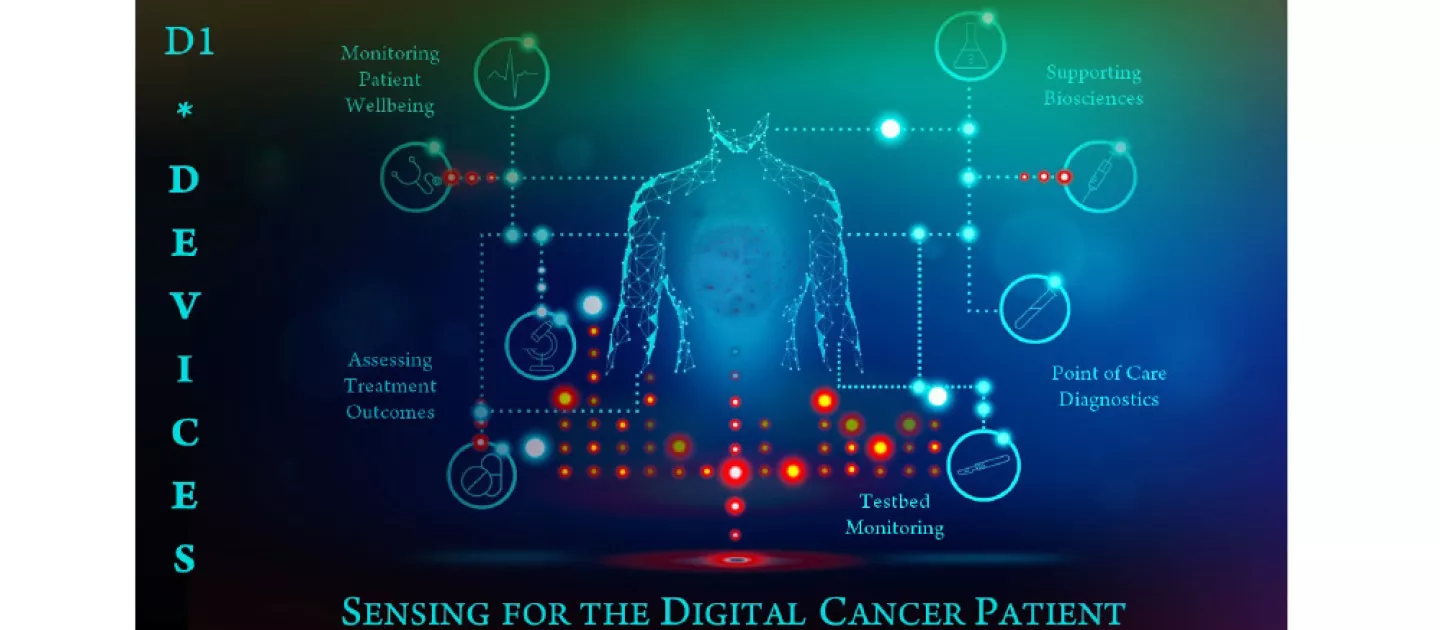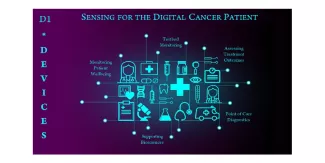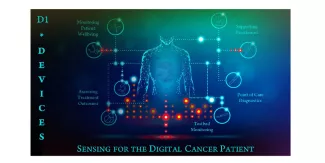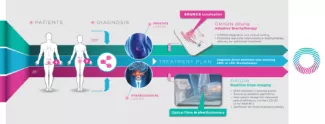Theme leads:
Central to this theme is the development of sensing systems and devices for a number of identified areas:
Supporting biosciences
Sensors have an important role in monitoring bioscience processes and evaluating research outcomes, while additional devices can assist in streamlining and controlling such processes.
Devices for pathology and point-of-care diagnostics
Considerable research within the Limerick DCRC focusses on identifying cancer biomarkers. This theme will look at developing sensors and microfluidic devices for monitoring such biomarkers and other parameters of interest in the tumour microenvironment for improved diagnostics and prognostics. These devices can be developed for none or minimally invasive in vivo point of care diagnostics or for high-throughput in vitro assessment. The sensors developed through this strand will feed directly into the diagnostic test development pipeline in D3: Digital Pathology and Diagnostics.
Providing a testbed platform with monitoring
A tailored monitoring system can provide vital information in the evaluation of new pharmaceuticals during clinical trials.
Devices for targeted treatment delivery
Treatment delivery devices with integrated sensing technology can provide for targeted treatment.
Sensing for treatment monitoring
Sensing systems for real-time monitoring of treatment delivery have an important role in ensuring the precision of the treatment and optimisation for a patient-led treatment plan. This is particularly true in the case of radiotherapy where real-time monitoring of the radiation dose often rely on computerised models to predict the radiation dose delivered.
Providing further statistical information for assessing treatment outcomes
The data obtained through monitoring different patient parameters, from the tumour microenvironment to the precision of the treatment delivery, will provide valuable information in assessing patient outcomes. These datasets will form valuable input in D5: AI and Deep Learning for developing the digital cancer patient.
The University of Limerick has strong expertise in developing novel sensors for health monitoring and this theme will support the multidisciplinary nature of this area by providing a clear channel between clinicians, researchers, and industry for the realisation of novel sensing devices.
ORIGIN aims to deliver more effective, photonics-enabled, brachytherapy for prostate and gynaecological cancer treatment through advanced real-time radiation dose imaging and source localisation. This will be achieved by the development of a new optical fibre based sensor system to support diagnostics-driven therapy through enhanced adaptive brachytherapy. The European funded project, co-ordinated by the University of Limerick, will bring together a highly multidisciplinary consortium of leaders in their respective fields (academia and industry with photonics, engineering, medical physics, radiobiology, and clinical expertise), in order to develop a new multi-point optical fibre based dose monitoring system for both low dose rate and high dose rate brachytherapy, with novel algorithms to provide 3D dose imaging with source localisation capability.
The ORIGIN system will be integrated into existing clinical brachytherapy treatment planning and delivery systems to confirm that the dose prescribed to the tumour is achieved, whilst ensuring the dose to organs at risk (OARs) is within acceptable limits. This will provide for optimised dose-led, patient-oriented, personalised treatment plans leading to improved patient outcomes and prevention of treatment errors, with the potential to reduce the overall risk of treatment error by 55%. The optical fibre radiation dosimeters will be further optimised for improved optical signal collection efficiency, higher signal-to-noise ratio (SNR) and repeatable high volume fabrication. Taking manufacturability into consideration from the outset will ensure that ORIGIN establishes Europe at the fore of brachytherapy system development and photonics manufacturing.
Brachytherapy is a form of radiotherapy where radiation is administered internally. It is divided into Low Dose Rate (LDR), where the radioactive sources, known as seeds, remain implanted permanently in the patient, and High Dose Rate (HDR), where higher activity radiation sources are temporarily implanted. Correct placement of the radiation source is vital to ensure adequate radiation to the target area (tumour), while ensuring minimum exposure to nearby critical organs, such as, in the case of prostate and gynaecological cancers, the bladder, urethra and rectal wall. Optical fibres provide an ideal solution to true in vivo volumetric dosimetry due to their small size, flexibility and electrical passiveness. Optical fibre sensors offer numerous advantages over conventional dosimeters, such as thermo-luminescence detectors and diodes. The most significant feature of an optical fibre dosimeter is that the dose information is transmitted using optical signals as opposed to electrical signals and that these optical signals can be remotely collected. This ensures the utmost safety for the patient and medical staff in conducting in-patient in vivo dosimetry. Furthermore, their immunity to electrical and electromagnetic interferences, ensures their compatible with use in a range of imaging environments commonly used with radiotherapy, e.g. ultrasound, MRI, CT. The project will progress the development of optical fibre based sensors capable of measuring true in vivo (i.e. internal to the body) radiation levels during treatment to provide for dose mapping and radiation source localisation capabilities.

The overarching aim of this theme is to develop devices and sensing systems to meet: 1) the clinical demand for improved real-time patient monitoring towards the development of the digital cancer patient, and 2) the pre-clinical need for sensors in advancing bioscience processes.
Development of sensors and devices for monitoring and advancing bioscience processes within the pharmaceutical sector
Working with industry to develop complete sensing solutions for oncology applications.




